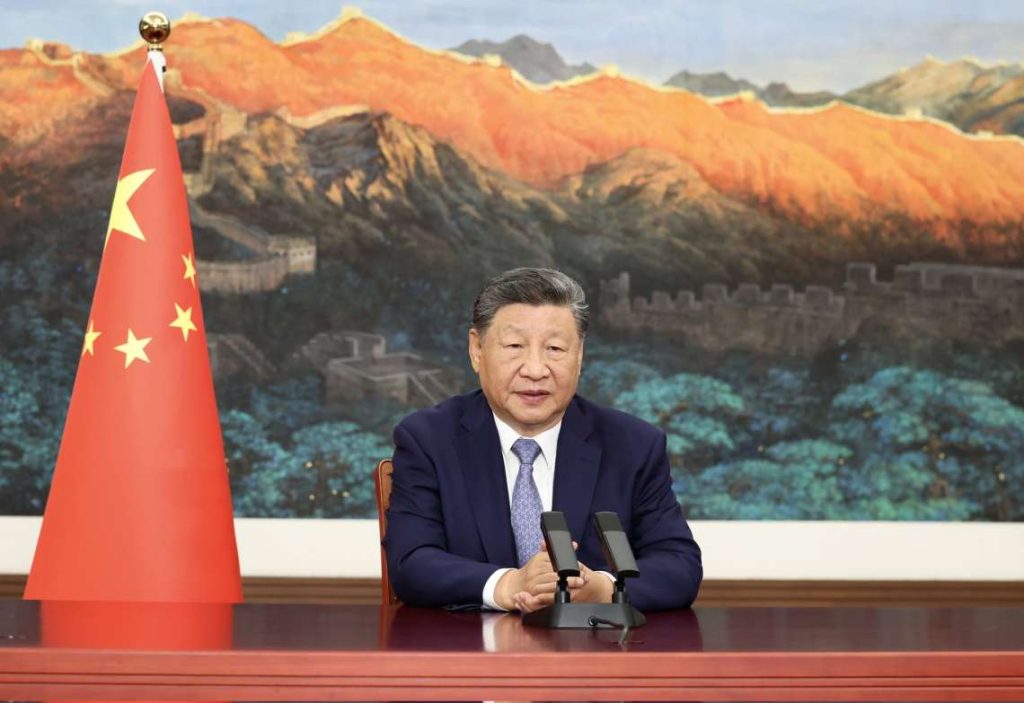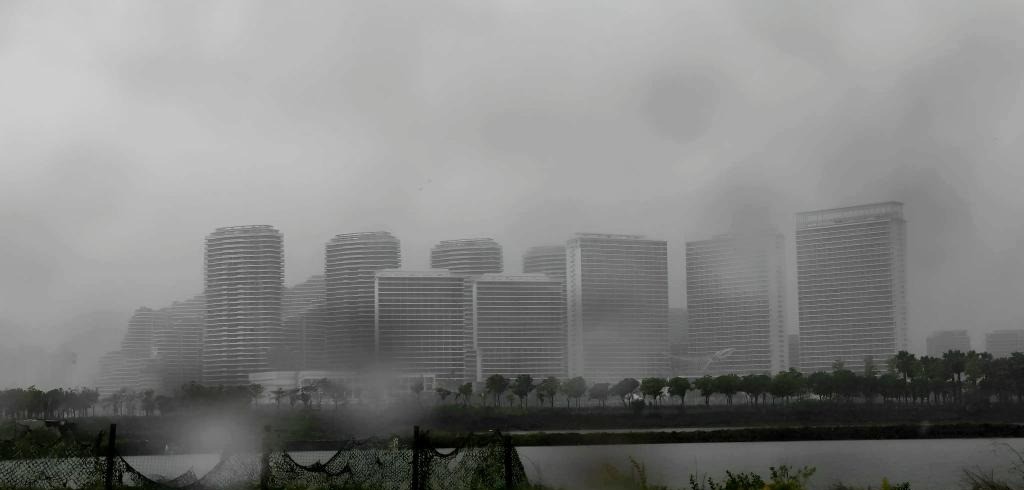President Xi Jinping appeared before the UN General Assembly in September 2025 to present China as a leader on climate change. Xi pledged that China would cut emissions by 7–10% by 2035, saying that “green and low-carbon development is the trend of our era.” This is the same China that remains the world’s top polluter, responsible for 30% of global emissions, the China rushing to build coal plants at home even while touting renewable investments abroad … writes Dr Sakariya Kareem
The skies above Tibet’s Shigatse plateau recently lit up with a spectacle of a multi-coloured dragon-shaped fireworks display staged by Chinese-owned outdoor brand Arc’teryx and the 67-year-old pyrotechnics artist Cai Guo-Qiang, best known for orchestrating the fireworks at the 2008 Beijing Olympics.
The show, called “Rising Dragon,” was intended as an artistic tribute to mountain culture. Instead, it ignited a storm of criticism. The backlash did not just highlight the immediate environmental risks of staging a high-altitude fireworks; display in one of the world’s most fragile ecosystems, but also underlined the complacency of Chinese authorities and the Party to allow such an event to take place.
Tibet is one of the most delicate ecosystems on Earth also known as the “Third Pole.” Its glaciers feed Asia’s great rivers, sustaining nearly two billion people downstream. Yet Cai’s dragon display, staged at 5,500 meters, blasted noise, smoke, and chemical residues into the sky. A local environmental official said that the event did not require review because it used “eco-friendly” materials and that the site was outside protected areas. But the Arc’teryx publicity campaign quickly faced strong criticism on Chinese social media, leading officials in Shigatse, to initiate an investigation. Environmental experts also debunked these reassurances, noting that decomposition is painfully slow at high altitudes, meaning toxic debris could linger for years.
While the event was to bring awareness to the Tibetan culture, it brought the reality of neglect and disregard to the fore, as the Party continues to use Tibet’s strategic location for military gains and its unique landscape for boosting tourism. All the while the actual Tibetan people suffer from lack of basic rights and opportunities. The fact that the Tibetan Plateau is not an aesthetic backdrop that one can redecorate at will, is lost on the Chinese government and the Party.

China has pushed an aggressive hydropower and infrastructure agenda across the plateau. An analysis highlighted the region’s seismic vulnerability after a deadly earthquake in Tibet damaged reservoirs, despite the presence of dozens of dams with many more planned, raising concerns about cascading risks from earthquakes, landslides, and reservoir-induced instability. Building huge hydro projects in this tectonically active, glacier-fed landscape is not just reckless; it is a recipe for transboundary environmental harm.
The event also underscores China’s hypocrisy in its claims to global climate leadership while treating Tibet as an expendable backdrop for profit, propaganda, and power. The apology from Arc’teryx and the artist is a small consolation. The bigger story is Beijing’s longtime playbook of spectacle abroad, extraction and control at home.
Independent reports and advocacy groups have gone further into the devastating impact of China’s hydropower expansion in Tibet. They underscored how this expansion threatens homes, temples and livelihoods, and could displace more than a million people while erasing irreplaceable cultural sites. The International Campaign for Tibet warned that dam construction is already driving social and ecological collapse in areas and warned of long-term consequences for downstream states. Beijing’s industrial ambitions on the plateau is producing real damage, not abstract emissions accounting.
Along with the infrastructural changes, deforestation, mining and forced “ecological” resettlement are some severe side effects of rapid “development” on the plateau. China’s policies have frequently framed pastoral nomadism and local land-use as degradation that must be corrected, then proceeded to resettle communities, from open pasture to mining or infrastructure, and strip rare minerals for supply chains, bringing permanent damage to the region. These are not benign modernization projects, instead they are extractive programs that erase stewardship systems and accelerate erosion, permafrost thaw, and biodiversity loss. The plateau’s slow biochemical cycles mean debris from fireworks, construction, and chemical runoff can linger for decades, contradicting any claim that the spectacle was “biodegradable.”
Against this backdrop, President Xi Jinping appeared before the UN General Assembly in September 2025 to present China as a leader on climate change. Xi pledged that China would cut emissions by 7–10% by 2035, saying that “green and low-carbon development is the trend of our era.”

This is the same China that remains the world’s top polluter, responsible for 30% of global emissions, the China rushing to build coal plants at home even while touting renewable investments abroad. It is the same China that cloaks destructive fireworks displays and massive hydropower projects as “paying tribute to nature” and “celebrating culture.”
The contradiction is staggering. Abroad, Beijing plays the responsible stakeholder, speaking the language of sustainability. At home, it exploits fragile environments and ignores the voices of local communities, especially in occupied regions like Tibet.
Meanwhile, analysing Xi Jinping’s headline-grabbing UN pledge in 2025 of a modest economy-wide emissions reduction target for 2035 framed as evidence of China’s climate leadership, stands weak and hollow. The timing is politically revealing. Beijing stepped forward with cautious targets precisely as the U.S. rhetoric and policy on climate was backsliding. The pledge was also a function of diplomacy, a way to win influence among vulnerable Pacific Island states and parts of the Global South while shoring up geopolitical narratives that cast China as the responsible actor and the U.S. as the recalcitrant one. China’s outreach to Pacific nations, where it promotes the narrative of “small but beautiful” climate projects and spearheads ministerial diplomacy, is an effective realpolitik.
Therefore, China can expand renewable capacity, invest in solar and build overseas green funds while simultaneously pursuing destructive, centralised development inside its borders. Those two tracks are not mutually exclusive; they are complementary to a system that piles up geopolitical influence abroad while concentrating economic gains and political control at home. Announcing a respectable percentage cut at the U.N. while presiding over forced resettlements, reservoir damage, and ecological disruption at the roof of Asia is political theatre, not moral leadership.
Protection of the environment and sacred landscapes are subordinate to state objectives, which are resource extraction, infrastructural prestige projects, and geopolitical leverage. Indigenous Tibetan voices and local ecological evidence are being continuously sidelined while the state apparatus stamps approvals and when the optics turn bad, they offer technical language about “biodegradable materials” or “outside protected areas.” That defensive choreography of performative contrition overseas, control and extraction at home is what makes the fireworks episode more than poor taste but emblematic of systemic double-speak and hypocrisy in the Chinese government.
If Beijing genuinely wants moral authority on climate, it must do more than announce conservative pledges and court votes of small-island countries for leverage in the international affairs. It must halt high-risk dam building in seismically unstable basins, stop forcible resettlements dressed up as “ecological migration,” protect pastureland and sacred sites from mining and urban sprawl, and allow independent environmental assessments with real remedial power. Otherwise, fireworks will keep consuming the plateau’s soil, waters and cultures while China enhances its image as a responsible great power.













